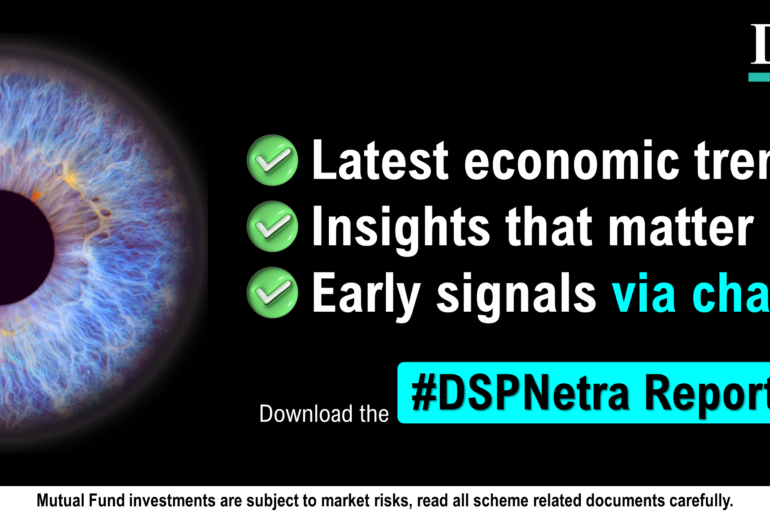Last Updated on Nov 24, 2022 by
As a prudent investor, one wants to safeguard their portfolio from market volatility. However, no one can predict the market movement. One of the potent tools to address volatility is time. Hence, instead of timing, the market one should aim to stay invested for the long term to beat the volatility. The key to long-term wealth creation also lies in being invested in well-diversified funds and not getting swayed away by market situation changes.
The market is always filled with volatility due to various short-term events and changing factors such as interest rates, geo-political situations, climatic conditions, company performance, business outlook and so on. However, most of these factors do not impact all the companies structurally and their impact regresses over a period of time.
Once the investors are aware that there will be volatility on the way, they will be better prepared, well informed and aim to get the benefit of growth that equities tend to give in the long run. One has to be ready for the volatility and use it to their benefit when the markets go down. In this article, we will understand how investors can be prepared and strengthen their portfolios, especially during volatile times.
Steps to take during volatile market conditions
The above graph is used to explain the concept and is for illustration purposes only and should not be used for the development or implementation of an investment strategy. Past performance may or may not be sustained in future.
Source and date: Source: MFI Explorer. Data as of 30th October 2022
Looking at the chart, it is clear that many events have impacted the stock market since 1991. However, after every fall, the index has created a new high. Given this experience, it is clear that volatility seems to be exaggerated in the short term but gets reduced over long periods. Over a long period of time, equities offer better compounding.
Here are some of the steps one can take during volatile market conditions, in order to strengthen the portfolio:
- Systematic investments: An investor can systematically invest in the market to take advantage of the ups and downs. During the decline in the market, an investor gets more units, and when the market goes up, it plays in their favour. Investing through SIP is one of the ideal ways to have a disciplined and systematic approach to investing. A SIP facilitates regular investments at periodic intervals, enabling an investor to average out the cost of their investments.
- Asset allocation: Every investor has different goals, risk appetite and time horizon for investments. Based on these factors, an investor can allocate in different assets in the desired proportion as per their profile. Having investments in different asset classes like debt, equity, gold, real estate etc., enable investors to expose their portfolios to different market conditions, thereby limiting the overall volatility in the portfolio. Investors can opt for Hybrid Funds like Balanced Advantage Funds as part of their core portfolio since these funds tend to follow the basic tenets of asset allocation, which can help lower overall portfolio volatility.
- Rebalancing – Rebalancing a portfolio is a crucial yet often neglected aspect of investing. It ensures that investments are well diversified into those asset classes that have the potential to generate expected returns. And also the overall portfolio of the investor is aligned with their desired objectives.
When the markets go down, the debt portion can be rebalanced, and equity allocation can be increased in a portfolio to take benefit of better valuation of equity as an asset class. Rebalancing should be an annual activity, or it can be done each time the asset allocation changes the desired percentage. This can be different for every investor, as asset allocation might be different for different investors.
For example, let’s say that an investor decides to maintain the asset allocation at 50% in equity and 50% in debt, and the tolerance level is 10% for reset. After eight months, due to market volatility, the portfolio has changed to 60% equity and 40% debt – then rebalancing is required.
Takeaway
Suppose an investor has invested with a certain goal in mind. In that case, they should start allocating assets to safer instruments systematically before reaching the goal so that the portfolio is safeguarded from the volatile markets. One cannot predict the market and hence should avoid timing the market and stay away from fear and greed. To sum up, in investing, an investor must focus on being disciplined. They should have a long-term investment approach, use the volatility to add quality funds to their portfolio and let the investments grow with time.
Disclaimer: This press release represents the views of Axis Asset Management Co. Ltd. and must not be taken as the basis for an investment decision. Neither Axis Mutual Fund, Axis Mutual Fund Trustee Limited nor Axis Asset Management Company Limited, its Directors or associates shall be liable for any damages including lost revenue or lost profits that may arise from the use of the information contained herein. Investors are requested to consult their financial, tax and other advisors before taking any investment decision(s). Statutory Details: Axis Mutual Fund has been established as a Trust under the Indian Trusts Act, 1882, sponsored by Axis Bank Ltd. (liability restricted to Rs. 1 Lakh). Trustee: Axis Mutual Fund Trustee Ltd. Investment Manager: Axis Asset Management Co. Ltd. (the AMC). Risk Factors: Axis Bank Limited is not liable or responsible for any loss or shortfall resulting from the operation of the scheme. No representation or warranty is made as to the accuracy, completeness or fairness of the information and opinions contained herein. The AMC reserves the right to make modifications and alterations to this statement as may be required from time to time.
The information set out above is included for general information purposes only and does not constitute legal or tax advice. In view of the individual nature of the tax consequences, each investor is advised to consult his or her own tax consultant with respect to specific tax implications arising out of their participation in the Scheme. Income Tax benefits to the mutual fund & to the unit holder are in accordance with the prevailing tax laws as certified by the mutual fund’s consultant. Any action taken by you on the basis of the information contained herein is your responsibility alone. Axis Mutual Fund will not be liable in any manner for the consequences of such action taken by you. The information contained herein is not intended as an offer or solicitation for the purchase and sale of any schemes of Axis Mutual Fund.
Past performance may or may not be sustained in the future.
Stock(s) / Issuer(s)/ Sectors mentioned above are for illustration purposes and should not be construed as recommendations.
Mutual Fund Investments are subject to market risks, read all scheme related documents carefully.
- Make the Most of Volatility To Strengthen the Portfolio - Nov 24, 2022



